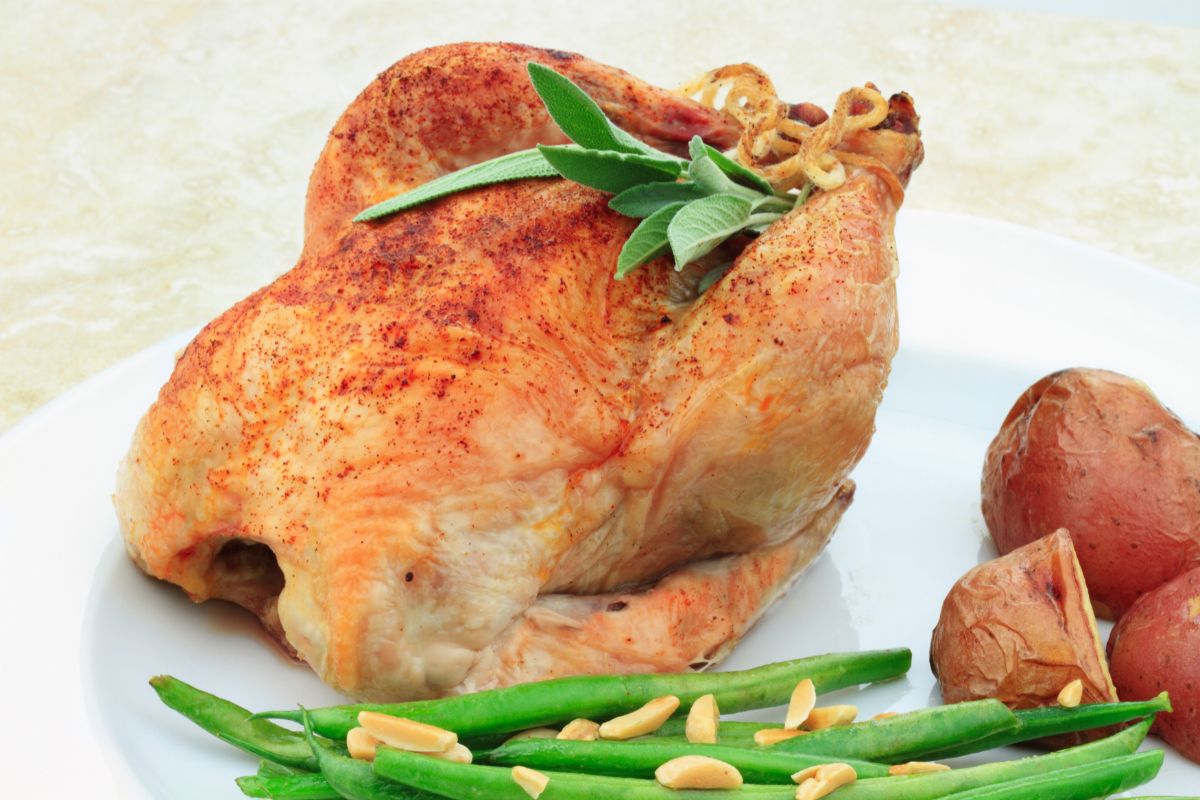Chicken is a meat that will always get your taste buds tingling, and this is especially true when it comes to Cornish hens.

Also known as Cornish game hens, these delicious types of chicken are extremely tender and tasty. Even better, they’re even easier to serve than regular chickens, making them the ideal type of meat for a big gathering.
With that being said, if you’ve got your collection of Cornish hens frozen, then you’ll need to make sure they’re all defrosted properly before you cook them. So, how long does it take to thaw your Cornish hen?
The short answer is that the defrosting time depends on the method you use. If you defrost a Cornish hen in your fridge, then it could take anywhere between 8 and 14 hours to thaw properly.
Meanwhile, if you thaw the chicken in a microwave, it’ll take just 8 to 10 minutes. On the other hand, you can defrost a Cornish hen under cold water in your sink. This method will take anywhere from 30 to 60 minutes.
There’s plenty more to learn about defrosting Cornish hens, including how to perform each method, and we’ve got all the answers in our handy guide below. Read on!
How Long Does It Take To Defrost A Cornish Hen?
Freezing your meat is a great way to get it to last until the time you need to cook it. After all, meat is known to go off pretty quickly, and you don’t want the meat to expire before you’re going to need it.
As a result, freezing it will allow you to keep it for a good few months. However, you’ll need to thaw the meat when you’re ready to use it.
Thankfully, you’re spoiled for choice when it comes to defrosting a Cornish hen, because there are a variety of different methods you can use!
Each of them are pretty simple, but for some of them you will need to do them long in advance of you cooking the meat – so make sure you plan ahead.
The safest method for thawing Cornish hen is by putting it in your fridge, though the method takes the longest amount of time. You can also thaw the Cornish hen under cold water in your sink.
Finally, the quickest method for defrosting Cornish hen is in your microwave, however there’s a risk that it could start to cook.
How Long To Thaw Cornish Hen In Your Fridge?

One of the most common ways that people defrost their food is by removing it from their freezer and then leaving it in their fridge.
This helps to keep the food at a constant temperature, and you can simply leave the food there and know that it’ll be ready eventually. However, the method does take time, so planning ahead is required.
Defrosting your Cornish hen the fridge is the best way to thaw it, because it’s the safest and most reliable method.
Safety is absolutely essential when it comes to dealing with meat, especially when defrosting, because of all the germs that can get involved.
If you try to cook a piece of meat that hasn’t fully defrosted, then the meat will take longer to cook, and as a result parts of it might end up not being fully cooked.
This means those parts could contain harmful bacteria which would affect your health, make you ill, and perhaps do even more damage than that.
As a result, it’s essential that you defrost your meat properly, and so the fridge is the ideal option. Better still, the fridge will keep your Cornish hen at a constant and safe temperature while it thaws.
This is known as “slack thawing”, where you’re moderating the temperature of food so it can gradually increase its temperature. On top of that, you can leave other bits of food defrosting in the fridge too while you do it – things like vegetables and so on.
However, you will need to decide upon defrosting your Cornish hen in the fridge well in advance, because it takes a good deal of time.
Thawing a Cornish hen of average size in the fridge will take between 8 and 14 hours to thaw. Many will put it in the fridge the night before the day they want to cook it.
How To Thaw Cornish Hen In The Fridge
To defrost Cornish hen in your fridge, first take it out of your freezer and place the meat in a bowl. After that, cover it in plastic wrap. If it’s already wrapped in plastic from before, leave it that way.
Now leave the wrapped Cornish hen in your bowl and place the bowl into your fridge. The bowl will collect any ice and keep things safer. Leave the bowl and meat in there overnight, for the correct period of time.
If it’s still frozen in the morning, leave it to defrost for a few hours more.
As soon as it’s fully defrosted, cook it straight away.
Thawing Cornish Hen In The Microwave
The quickest way to defrost Cornish hen is in your microwave, though it can be risky to your health.
How? Well, thawing the meat in your microwave can cause uneven cooking, where not every part of the bird has been fully cooked through. This leaves places where there could be germs. Additionally, the meat might even start to cook in the microwave.
To defrost it this way, put paper towels on a microwave-safe container and then unwrap the frozen hen and put it into it. Your microwave might have a defrost function, which you can use. If not, have your microwave on 30% power.
For every pound of Cornish hen, the microwave will take between 8 and 10 minutes to defrost it. Ensure you know the weight of your bird first.
Check the meat every 2 minutes to ensure none of it has started to cook – if it has, move that part away from the microwave’s heat source.
Thawing Cornish Hen In Cold Water
Finally, if you’re tight for time then you can thaw the meat under cold water in your sink. This can take 30-60 minutes.
Remove the Cornish hen from your freezer, then put it into a zip-lock bag and seal it. Put the bag into a big bowl, then fill the bowl with some lukewarm water. Finally, leave the tap trickling into the bowl, where it’ll run off the bag.
After 30 minutes, see if the Cornish hen has thawed. If it hasn’t, leave the water trickling onto the bag.
Final Thoughts
Cornish hens are delicious and tender, but you need to know how to defrost them properly. You can thaw your hen in 3 different ways – use our guide to find how!
- How To Reheat A Cheesesteak - November 5, 2023
- What Are Three Must Have Kitchen Knives? - September 22, 2023
- How To Protect Edges Of Pie Crust - June 15, 2023








